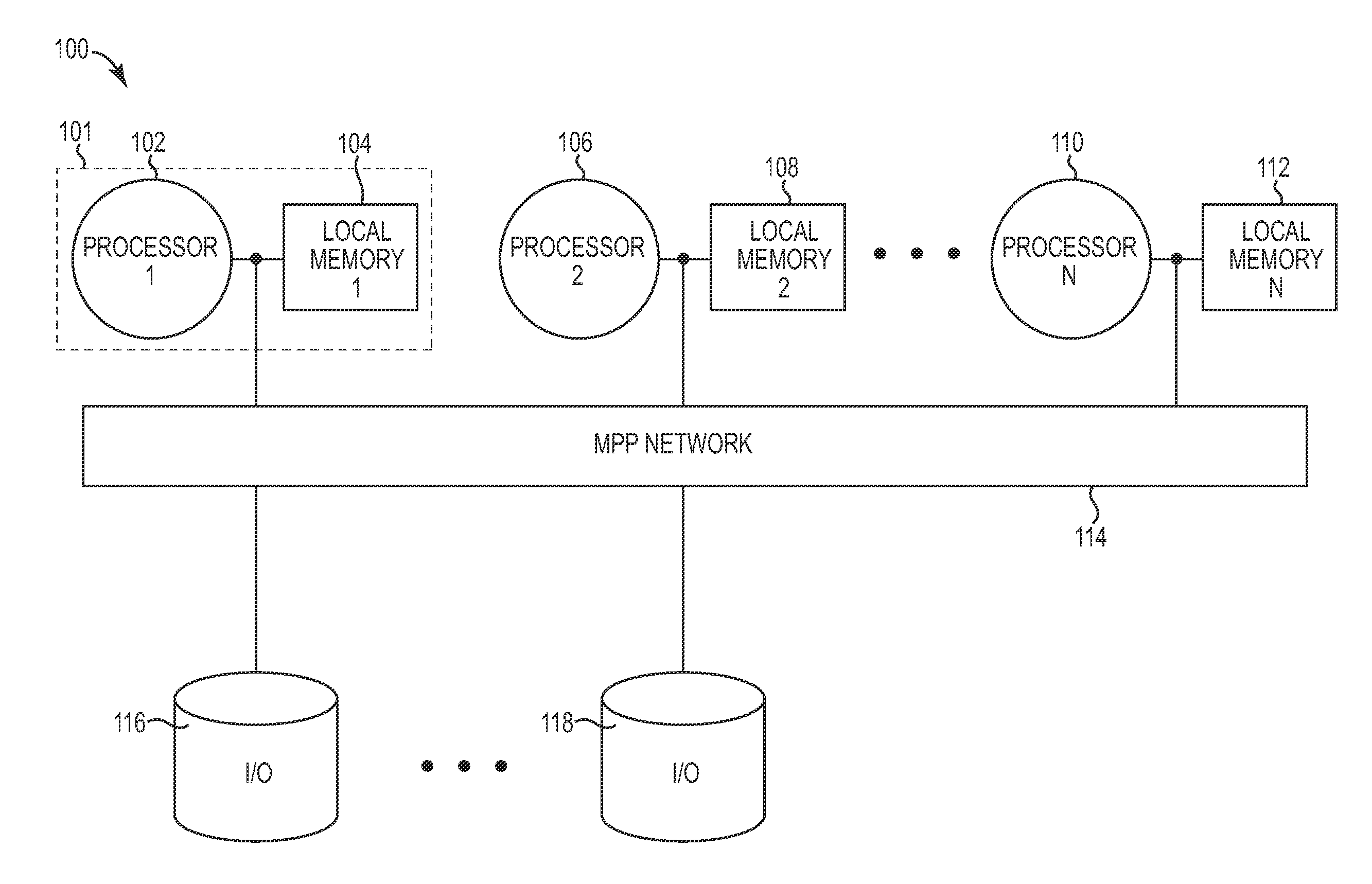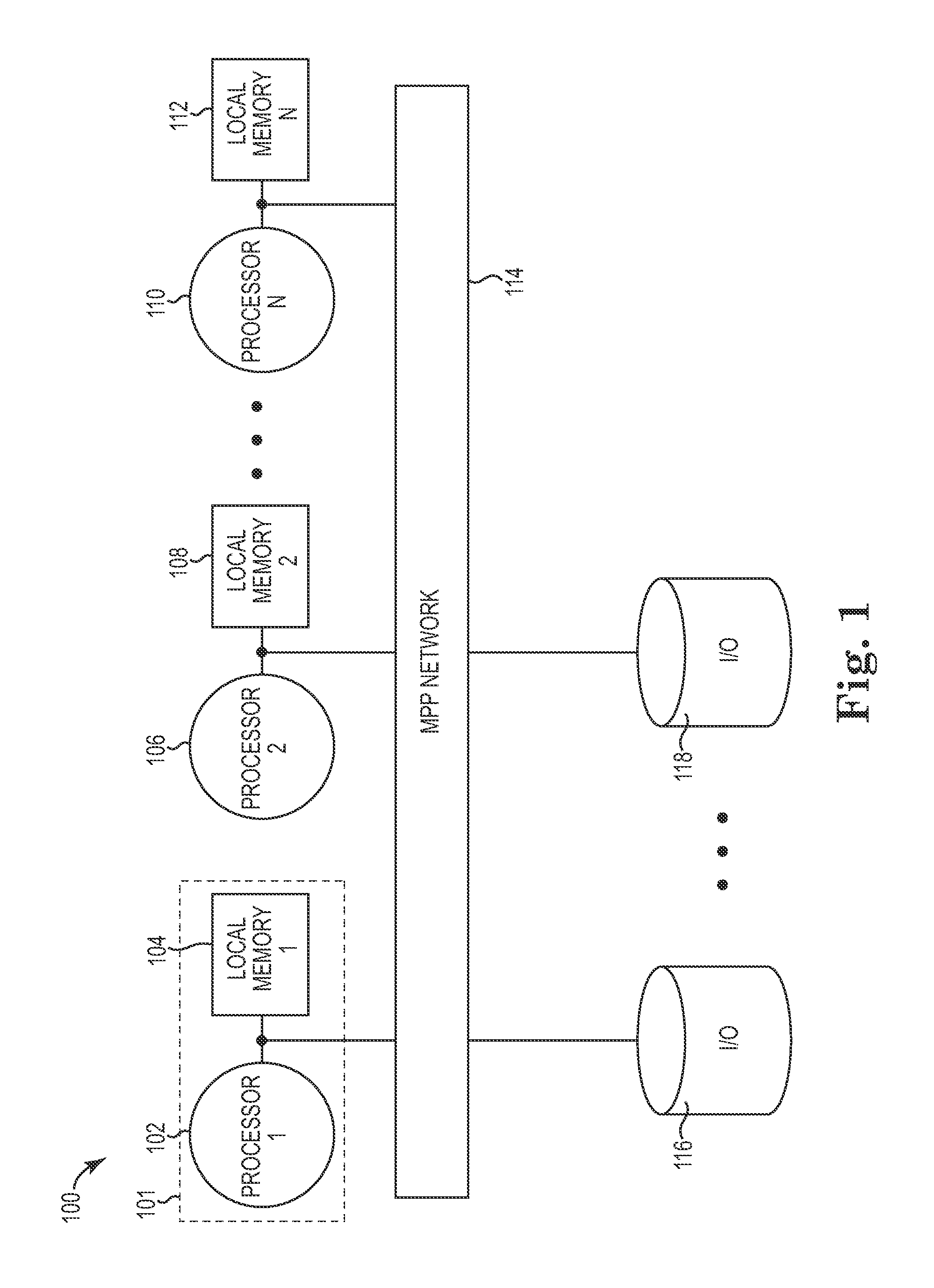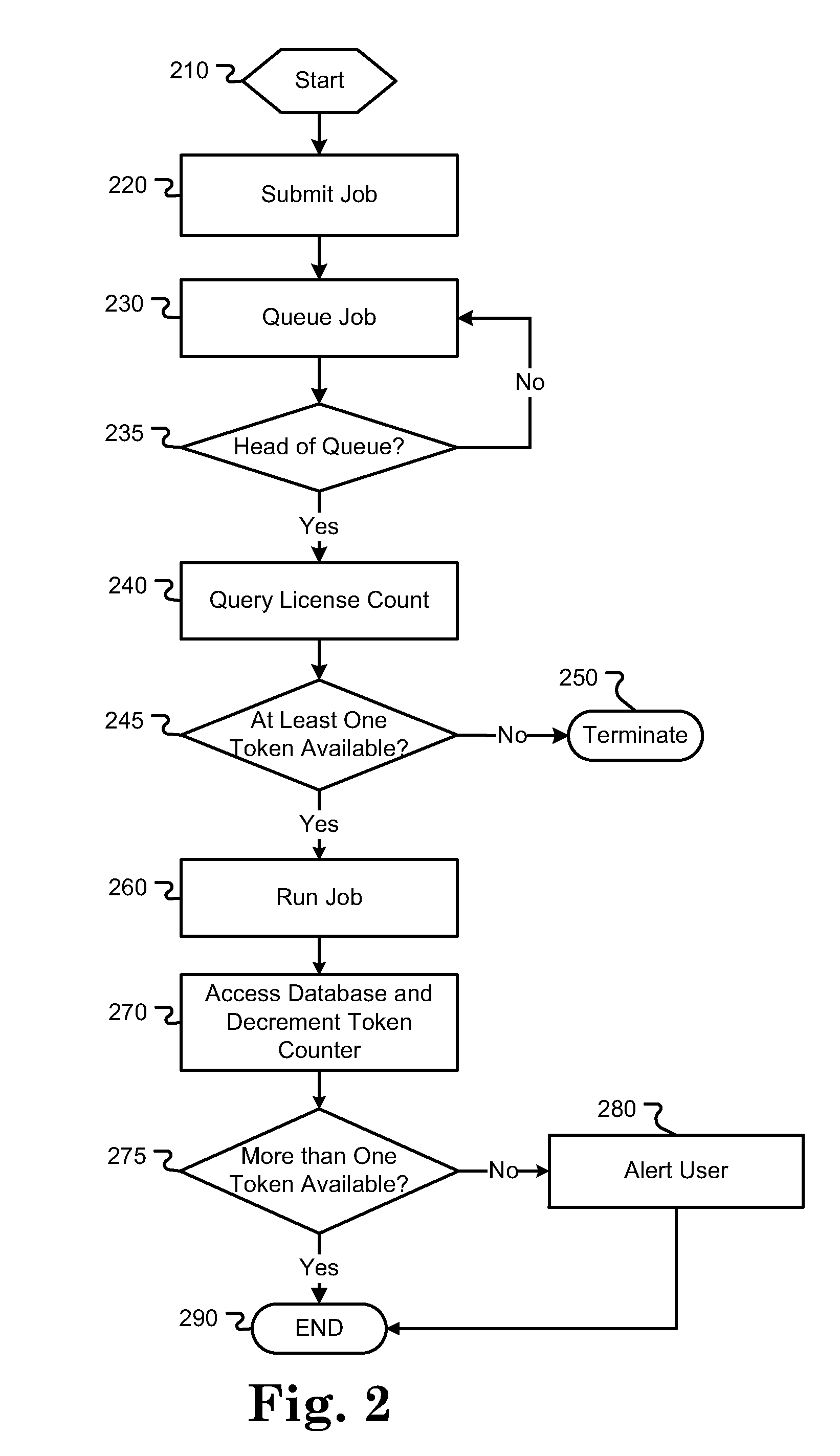Software license serving in a massively parallel processing environment
a software license and processing environment technology, applied in the field of software licensing techniques, can solve the problems of not realistic restriction, model is typically limited to single-instance software applications, etc., and achieve the effect of simplifying licensing considerations and facilitating license usag
- Summary
- Abstract
- Description
- Claims
- Application Information
AI Technical Summary
Benefits of technology
Problems solved by technology
Method used
Image
Examples
Embodiment Construction
[0019]One embodiment of the present invention provides token-based licensing techniques that enable licenses to be distributed to individual CPUs or other units of processing on an as-needed basis for the execution of software. In this way, the presently-described licensing technique approaches a problem from a “royalty”-generating view, consuming licensing tokens or credits for actual CPU usage that occurs during the execution of specific tasks. Thus, a user will only need to pay for the tokens that are actually consumed by the computing system—and consume the licenses that are needed to actually execute the software on the computing system. This eliminates the need for “nodelocked” licenses, a floating license server, or other licensing strategies that are not easily adaptable to large computer processing systems.
[0020]The various embodiments of the present invention provide the ability to scale the use of license tokens to large multi-processor, multi-core, and multi-system envir...
PUM
 Login to View More
Login to View More Abstract
Description
Claims
Application Information
 Login to View More
Login to View More - R&D
- Intellectual Property
- Life Sciences
- Materials
- Tech Scout
- Unparalleled Data Quality
- Higher Quality Content
- 60% Fewer Hallucinations
Browse by: Latest US Patents, China's latest patents, Technical Efficacy Thesaurus, Application Domain, Technology Topic, Popular Technical Reports.
© 2025 PatSnap. All rights reserved.Legal|Privacy policy|Modern Slavery Act Transparency Statement|Sitemap|About US| Contact US: help@patsnap.com



